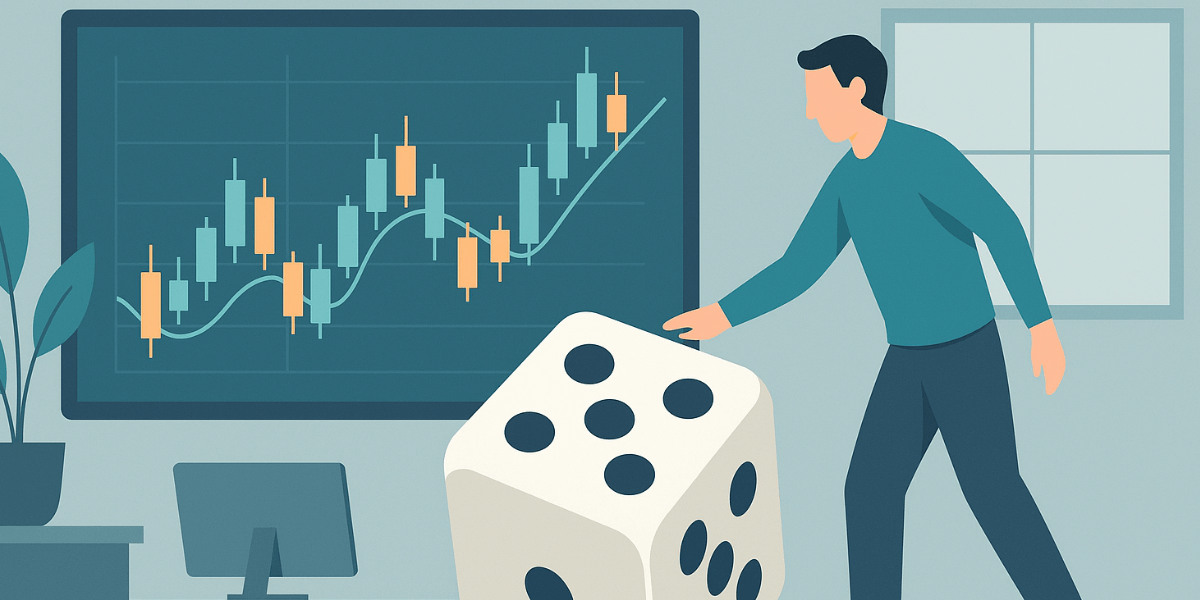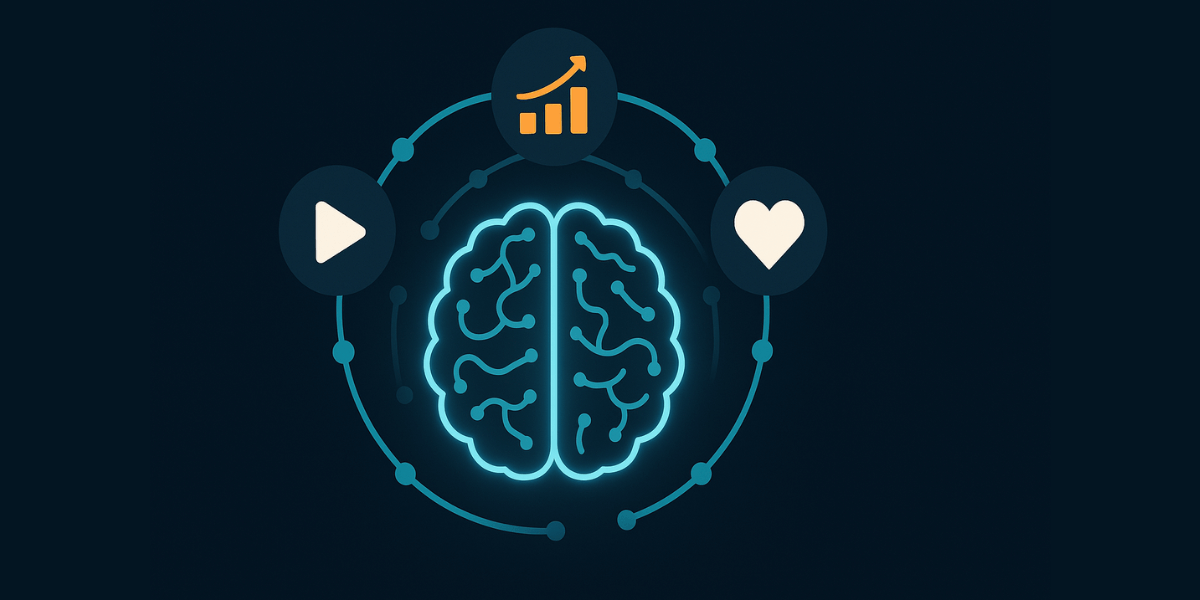Forex trading is often described as a test of strategy, discipline, and risk management. Yet beneath charts, indicators, and position sizing sits a biological substrate that determines whether any of those tools can be applied consistently: sleep.
Every high-quality trading behavior—reading context, inhibiting impulses, executing at planned levels, and standing down when conditions are poor—depends on neural systems that are restored and recalibrated during sleep. When sleep is compromised, these systems degrade. The result is a trader who can still open the platform and recognize patterns, but who cannot regulate attention, emotion, and time horizons well enough to turn recognition into rational action. This article builds a comprehensive, practitioner-focused framework for understanding how sleep shapes forex performance, why circadian rhythm matters across sessions, how sleep debt silently corrodes expectancy, and what concrete protocols traders can implement to align biological rhythms with market rhythms.
Sleep as a Core Performance Variable
In a 24-hour market, the temptation is to be perpetually available: London’s open, New York’s overlap, Asia’s liquidity pockets. However, human physiology is diurnal. Cortical networks that support executive function and self-control are designed to cycle through periods of wakefulness and recovery. Sleep is not a passive state; it is an active process during which synaptic weights are pruned, memories are consolidated, metabolic waste is cleared, and affective circuits are recalibrated.
For traders, that means the night prepares the mind that meets the market. Treating sleep as optional is equivalent to accepting degraded working memory, slower reaction times, narrower attentional bandwidth, and heightened emotional reactivity—all of which translate into slippage in decision quality and risk discipline.
The Trader’s Brain: Systems That Sleep Restores
Four neural systems map cleanly to trading tasks and are directly affected by sleep architecture:
- Prefrontal executive control: Governs planning, impulse inhibition, rule adherence, and long-horizon thinking. Sleep loss weakens this system, increasing the probability of chasing price, moving stops, or entering outside the plan.
- Attentional networks: Support sustained focus and task switching. With poor sleep, oscillation between charts, news, and orders becomes error-prone, and the trader’s “read” of context degrades.
- Affective regulation (amygdala–prefrontal coupling): Sleep strengthens top-down control over emotional responses. Deprivation uncouples that system, amplifying fear on drawdowns and euphoria on small wins.
- Reward prediction and learning: Sleep stabilizes the reward system and integrates lessons from trading journals into procedural memory. Without it, reinforcement skews toward novelty and stimulation instead of process and patience.
Stages of Sleep and What They Do for Trading
Sleep cycles through non-REM and REM phases approximately every 90 minutes. Each phase supports distinct competencies relevant to trading:
- Light NREM (Stages 1–2): Transition states that reduce sensory input and prepare the brain for deeper restoration. Insufficient light sleep increases sleep fragmentation and reactive startle responses during sessions.
- Slow-Wave Sleep (Stage 3): Deep sleep associated with physical recovery, immune regulation, and glymphatic clearance. Traders with minimal slow-wave sleep show higher daytime fatigue and poorer stress tolerance when price action whipsaws.
- REM Sleep: Emotion processing and memory integration. REM supports pattern extraction from prior trades and tempers the intensity of negative affect after losses, enabling the next day’s discipline.
Sleep Debt and Expectancy: The Hidden Erosion
Traders evaluate strategies using expectancy: E = p × w − (1 − p) × l, where p is win rate, w is average win, and l is average loss, often expressed in R multiples. Sleep debt invisibly compresses expectancy by degrading the behavioral levers that protect it. When tired, traders tend to take marginal setups (lowering p), cut winners prematurely (reducing w), and violate stops (increasing l). None of these lapses look dramatic in isolation; together they bend the equity curve from convex to flat or negative. Because subjective sleepiness adapts quickly, many traders believe they are “fine” while their distribution of outcomes subtly shifts in the wrong direction.
How Circadian Rhythm Interacts with the 24-Hour Forex Cycle
Circadian rhythm sets the daily oscillation in alertness, hormone release, body temperature, and cognitive performance. The suprachiasmatic nucleus in the brain anchors this rhythm primarily to light exposure. Traders who routinely shift schedules to chase sessions experience circadian misalignment, often described as social jet lag. Misalignment elevates baseline cortisol, disrupts melatonin timing, increases perceived stress, and reduces the amplitude of daily alertness peaks. The practical effect is a soft but pervasive fog: slower pre-market preparation, poorer read of structural context, and shorter emotional fuse when trades draw down.
Optimal practice is to pick one or two core sessions and build a stable sleep–wake anchor around them. For example, an Asia-based trader who specializes in London should standardize a later sleep window daily rather than oscillating between early and late nights. Consistency is more valuable to performance than sporadic presence in every session.
Risk Perception Under Sleep Restriction
Sleep restriction distorts risk perception in two directions: it blunts the felt cost of potential loss and exaggerates the salience of immediate reward. Traders under sleep pressure are more likely to enlarge size on thin edges, to average losers, and to view volatility as opportunity rather than noise. Conversely, they also show heightened aversion to uncertainty when facing new information, leading to hesitation on valid entries. This paradox—recklessness at the wrong time, timidity at the right time—is a signature of fatigued decision-making.
Trading Errors Most Associated with Poor Sleep
- Impulsive entries: Taking the first micro-structure flicker without full confluence, often at liquidity traps.
- Stop manipulation: Widening or removing stops during adverse excursion to avoid realizing loss.
- Profit suffocation: Cutting winners far earlier than plan to get instant relief, shrinking right-tail outcomes.
- Information thrashing: Excessive tab-switching between news and charts, increasing noise consumption and decision latency.
- Schedule overreach: Extending a profitable session “just a little longer,” turning cognitive fatigue into P&L variance.
Comparison Table: Rested vs. Sleep-Deprived Trading
| Dimension | Well-Rested Trader | Sleep-Deprived Trader |
|---|---|---|
| Executive Control | Adheres to plan, clean invalidation, consistent sizing | Rule drift, stop moving, size creep after losses |
| Attention | Sustained focus, purposeful tab switching | Distractible, reactive to headlines and ticks |
| Emotion | Stable affect, measured response to drawdown | Frustration spikes, revenge trading, euphoria on small wins |
| Expectancy (E) | Protects R, lets right tail expand | Stops violated, winners truncated, E compressed |
| Session Management | Starts and ends on schedule | Session creep, poor shutdown, sleep onset delayed |
Designing a Sleep-Conscious Trading Routine
Performance emerges from systems. To build a routine that respects biology and market structure, implement the following scaffolding:
- Choose your session(s): Commit to one or two. Allow yourself to miss moves outside those windows without regret; optionality is a subtle tax on sleep quality.
- Anchor your sleep: Fix bedtime and wake time within a 60-minute range every day, including weekends. Consistency raises circadian amplitude and improves alertness during trading hours.
- Light management: Maximize morning daylight exposure; minimize blue-light exposure 60 minutes pre-bed. If you must trade at night, use bright, cool light during session and warm, dim light in the wind-down.
- Stimulus hygiene: Schedule notifications in batches. Disable intrusive alerts after shutdown. Beware “harmless checks” at night; they reattach your brain to market salience and delay sleep onset.
- Wind-down ritual: Create a 30-minute pre-sleep sequence: journal, plan tomorrow’s first task, light mobility or breathwork, no screens. The ritual anchors the state shift from problem-solving to recovery.
Nutrition, Hydration, and Sleep Quality
Metabolic signals shape sleep. Large, late meals raise body temperature and fragment REM. Caffeine’s half-life (4–6 hours) means afternoon intake can disturb sleep architecture even if you fall asleep easily. Dehydration elevates cortisol and can cause nocturnal awakenings. Practical rules: finish heavy meals at least three hours before bed; set a caffeine cutoff 6–8 hours pre-bed; target steady hydration earlier in the day, tapering near bedtime.
Micro-Naps and Tactical Alertness
Short naps (15–25 minutes) can restore alertness without sleep inertia. They are most effective before high-demand blocks (e.g., London–New York overlap). Avoid long naps late in the day, which can push circadian phase and delay sleep onset. Treat naps as supplements, not substitutes: they top up vigilance but do not rebuild the deeper restoration that comes from consolidated nocturnal sleep.
Mindfulness, Breath, and the Sleep–Trade Loop
Sympathetic arousal undermines both trading decisions and sleep onset. A minimal breath protocol—four seconds inhale, six seconds exhale for five minutes—reduces physiological arousal and shortens sleep latency. Embedding brief mindfulness sessions at session end helps sever ruminative loops about missed trades or P&L, which otherwise carry into the night and fragment sleep.
Quantifying the Sleep–Performance Link in Your Journal
What gets measured gets managed. Add a sleep panel to your trading journal with fields for time in bed, estimated sleep duration, number of awakenings, perceived quality (1–5), and time to fall asleep. Correlate these with process scores (e.g., checklist adherence), expectancy metrics (median R, stop-rule violations), and emotional markers (urge to move stops, FOMO intensity). After four to six weeks, patterns emerge. Most traders discover that poor sleep predicts specific errors (e.g., cutting winners) with surprising regularity. Use these correlations to pre-commit: on a low-sleep score morning, reduce size, raise setup thresholds, and shorten session length.
Shift Work and Time-Zone Strategies
Some traders must operate against local night. In that case, build a “night-shift athlete” routine: blackout curtains; timed bright-light exposure during session; high-protein, lower-carb meals during work; complete darkness and cool temperature for daytime sleep. Guard the sleep block as if it were a meeting with your largest investor. In rotating schedules, plan gradual shifts (30–60 minutes per day) rather than abrupt jumps. Consistency still matters; the goal is the least disruption compatible with your edge.
Training Your Shutdown: The Last Trade Is Sleep
Sleep onset is a skill. Treat shutdown like a trade with a checklist: devices physically out of reach; next day’s high-impact decisions written on paper; gratitude or debrief note to close cognitive loops; lights dimmed; room cooled; breath cadence for five minutes. If you cannot fall asleep within 25–30 minutes, leave bed briefly for a quiet, non-screen activity until drowsy returns. Protect the association between bed and sleep; do not let it become a second trading desk.
Common Myths That Sabotage Rest
- “I can catch up on weekends.” Weekend oversleep shifts circadian timing and makes Monday harder. Recovery naps help, but consistency beats binge sleep.
- “Six hours is enough if I’m tough.” Toughness does not replace physiology. Subclinical deficits manifest as risk-rule drift and expectancy compression, not just yawning.
- “Alcohol helps me sleep.” Alcohol may hasten sleep onset but disrupts REM and deep sleep, causing lighter, fragmented rest and poorer next-day regulation.
- “I think better at night.” Some individuals are evening-biased chronotypes, but most performance peaks align with daylight. Test objectively with journal metrics, not preference.
The Economics of Rest: A Return-on-Sleep Model
Consider a hypothetical swing trader with baseline expectancy of 0.35R per trade over 40 trades per month. After three weeks of poor sleep, their win rate drops modestly, average win shrinks, and stop violations increase, reducing expectancy to 0.15R. At identical opportunity flow, that’s a 57% reduction in monthly edge. Restoring sleep is operational leverage: no new strategy needed—only biological alignment—to reclaim performance.
Case Studies: When Sleep Changes the Equity Curve
Case 1 — The London Specialist: A trader records a three-month streak of daily wake times within 30 minutes, with a 45-minute wind-down each night. Their process score rises from 72 to 86, stop-rule violations fall by half, and median R increases by 0.18. No changes in indicators, only in sleep routine.
Case 2 — The Overlap Chaser: Another trader chases both London and New York without stable sleep. Journal reveals a spike in early exits and missed fills after midnight checks. After committing to a New York-only focus and introducing a pre-sleep device cutoff, expectancy recovers from 0.10R to 0.32R within six weeks.
Case 3 — The Night-Shift Adapter: An Asia-based trader trades the London session at night. Implementing timed bright light during work hours, blackout curtains, and a strict daytime sleep window reduces daytime awakenings from four to one. Drawdowns become shallower and recover faster.
Action Blueprint: A 14-Day Sleep–Trade Reset
- Days 1–2: Choose core session(s). Fix wake and sleep windows. Remove screens from bedroom. Establish caffeine cutoff.
- Days 3–4: Create a shutdown ritual. Batch notifications. Journal sleep metrics alongside process scores.
- Days 5–6: Add breath protocol pre-bed and pre-trade. Standardize pre-market preparation timing.
- Days 7–8: Introduce light hygiene: morning daylight; blue-light filters after sunset; bright work light for night trading.
- Days 9–10: Calibrate nutrition: lighter evening meals; hydration earlier in day; avoid alcohol near bedtime.
- Days 11–12: Define fatigue rules: on sleep score ≤ 2/5, cut size by half, shorten session, and raise entry threshold.
- Days 13–14: Review correlations. Keep interventions that widen expectancy and reduce stop violations; discard the rest.
Building Team and Household Support
Many traders share space with family or roommates whose schedules conflict. Performance requires boundary-setting: communicate session times and sleep windows; use visual cues (door sign, lights) to indicate “on” and “off” states; consolidate chores and social time away from critical rest periods. Treat the sleep block as a business asset that safeguards the consistency your P&L depends upon.
When to Seek Professional Help
If snoring, breathing pauses, chronic insomnia, or daytime sleepiness persist despite routine improvements, consult a clinical professional. Disorders such as sleep apnea or restless legs syndrome fragment sleep architecture regardless of discipline. Addressing them is a performance upgrade with immediate cognitive dividends.
Conclusion
Forex trading rewards clarity, restraint, and repeatability. Sleep is the infrastructure that sustains those qualities. It restores the executive control that resists impulse, the attention that discerns structure from noise, and the emotional balance that rides variance without turning volatility into violence against the plan. In markets that never close, the most professional choice is to close yourself—on purpose, on time, every day—so that when you open the platform, you bring a brain capable of honoring your edge. The next level of performance for many traders is not another indicator or a new model; it is a darker room, a steadier schedule, and a mind trained to shut down as seriously as it switches on.
Frequently Asked Questions
How exactly does poor sleep reduce my trading edge?
It lowers executive control (leading to rule drift), narrows attention (increasing errors), and destabilizes emotion (heightening reactivity). These changes compress expectancy by lowering win quality and inflating loss size through stop violations and premature exits.
What is the minimum viable sleep window for most traders?
Seven to nine hours nightly for most adults, with consistent timing. Quality matters as much as duration; fragmented sleep degrades performance even if the clocked time seems adequate.
Can naps replace nighttime sleep?
No. Short naps improve alertness but do not replicate the deep restoration of slow-wave and full REM cycles. Use them tactically, not as primary recovery.
How do I trade London or New York from an incompatible time zone without burning out?
Standardize a stable, shifted sleep schedule, use bright light during work, blackout for sleep, and protect the daytime sleep block as non-negotiable. Avoid frequent schedule flips.
What metrics should I track to link sleep and trading?
Sleep duration, awakenings, perceived quality, and time to fall asleep. Correlate these with process scores, median R, stop-rule violations, and winner/loser holding-time asymmetry.
Does caffeine fix the cognitive deficits of sleep loss?
It masks fatigue but does not restore executive function or emotional regulation. Overreliance delays sleep, perpetuating the deficit.
Why do I feel “fine” on little sleep but trade worse?
Subjective sleepiness adapts quickly, while objective performance remains impaired. The gap shows up in rule drift and subtle expectancy compression rather than obvious drowsiness.
What is the best pre-sleep routine for traders?
A 30–45 minute wind-down: journal debrief, plan tomorrow’s first task, dim lights, light mobility or breathwork (4–6 cadence), and no screens. Repeat nightly to condition the state change.
How can I prevent market ruminations from delaying sleep?
Externalize thoughts via journaling, set a “no market” cutoff time, and use brief mindfulness to interrupt looping. Keep devices out of the bedroom to protect stimulus boundaries.
What single change delivers the largest improvement in both sleep and P&L?
Consistent sleep and wake times. Regularity increases circadian amplitude, which raises session alertness, reduces emotional volatility, and measurably cuts risk-rule violations—directly improving expectancy without changing strategy.
Note: Any opinions expressed in this article are not to be considered investment advice and are solely those of the authors. Singapore Forex Club is not responsible for any financial decisions based on this article's contents. Readers may use this data for information and educational purposes only.







